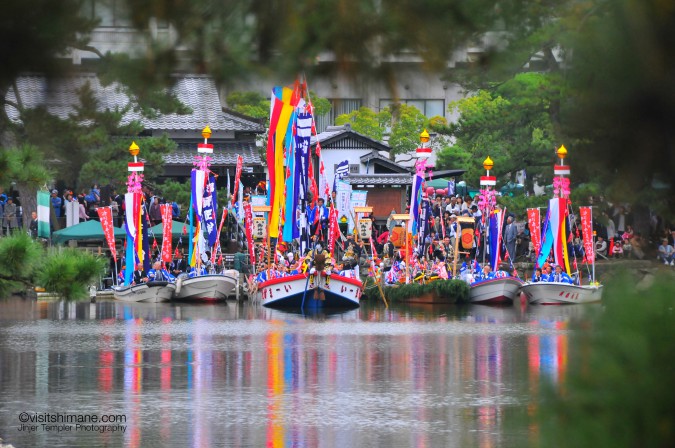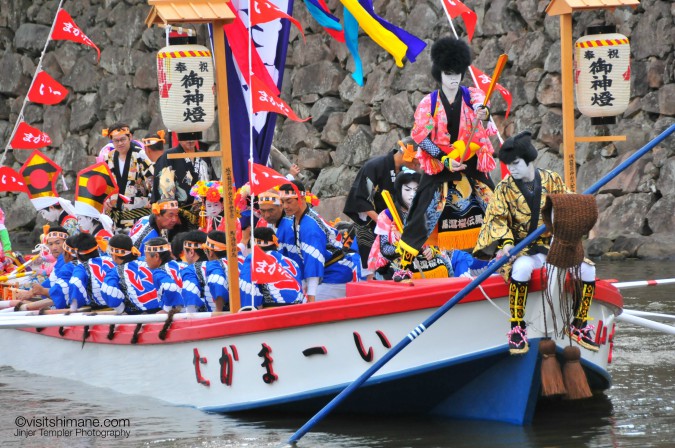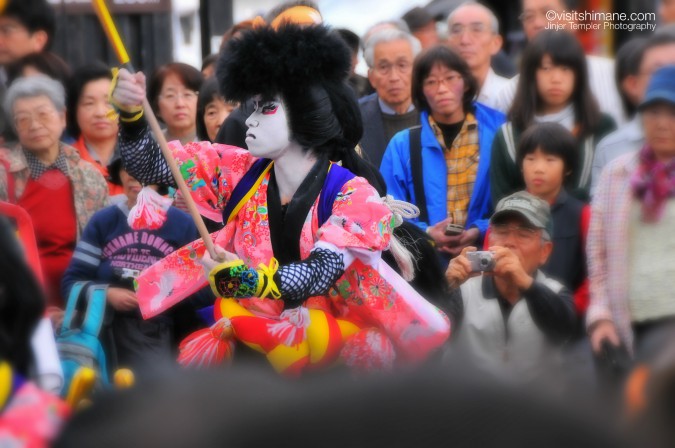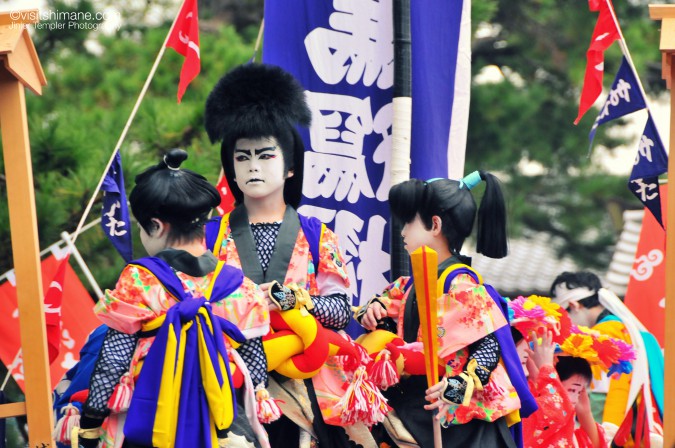The following is taken from an article in Gaijinpot.


The giant straw ropes called shimenawa that resemble anacondas coiled around a tree branch are Izumo Taisha’s most famous feature. They represent the separation between the mortal and supernatural worlds. In fact, the shimenawa at the Kagura Hall at Izumo Taisha are the largest in Japan, measuring 13 meters long and weighing five tons.
What’s with all the rabbits at Izumo Taisha?
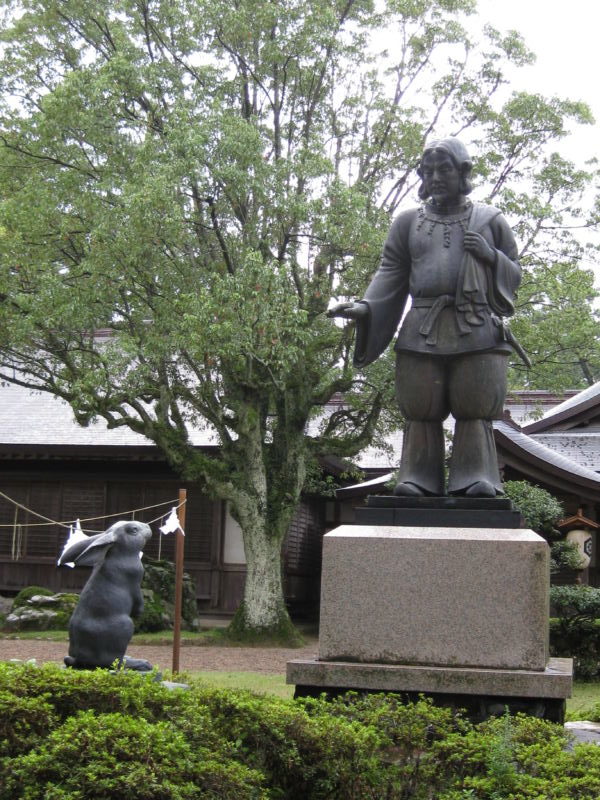
The main worship hall, where the Shinto deity Okuninushi is enshrined, is fenced in to divide the sacred from the everyday space. Built in 1744, this hall is the tallest in Japan, at about 24 meters. But it’s what lies behind the cherished building that catches most visitors’ attention.
At the back of the hall, there’s a cluster of cute rabbit statues! The rabbits are important to this shrine because of their connection to Okuninushi. Japan’s sacred text of creation stories, the Kojiki, tells a legend about how the god rescued a white rabbit from being eaten by sharks. Delight in the different personalities, quirks, and poses of each one as you walk through the shrine grounds.
At the nearby museum you’ll find Japan’s largest collection of excavated bronze swords and bronze bells, and learn more about the history of the holy Izumo region.
A shrine dedicated to matchmaking

The ritual for praying at Izumo Taisha is slightly different than at other shrines around Japan. Instead of clapping twice as you usually do at a Shinto shrine, at Izumo, you clap four times—twice for yourself and twice for your current or future partner.
Many young Japanese girls come to the shrine to pray for luck finding a future husband. Okuninushi is the Shinto god of marriage and good relationships, after all.
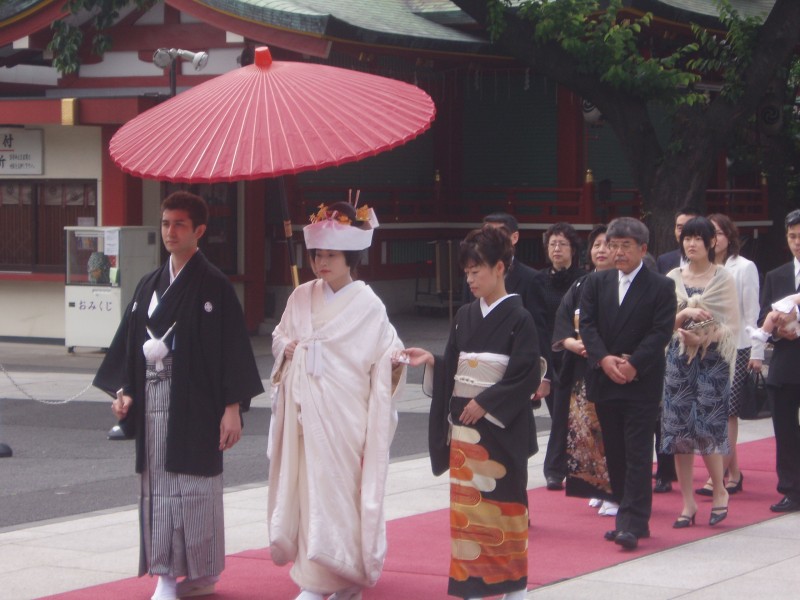
This has made the shrine into a very popular wedding destination as well. In 2014, a member of the Japanese royal family, Princess Noriko, tied the knot here. You may spot a wedding or two during your visit if you’re lucky!
Close to the shrine is an entire street lined with restaurants and souvenir shops. Try regional specialties like Izumo soba, which is made from buckwheat seeds and served with grated daikon, nori (dried seaweed) and spring onions.
Shimane Prefecture has yet to reach tourists’ Japan bucket lists, but it’s well on its way.
Nearby Sacred Beach
Located less than a kilometer and within walking distance from Izumo Taisha Shrine is Inasanohama Beach. The beach is home to a tiny shrine called Bentenjima which rests on a large rock in the ocean. [It is on this beach that the kamiari sai takes place when all the kami of Japan arrive by sea and are taken to be housed in Izumo Taisha.]
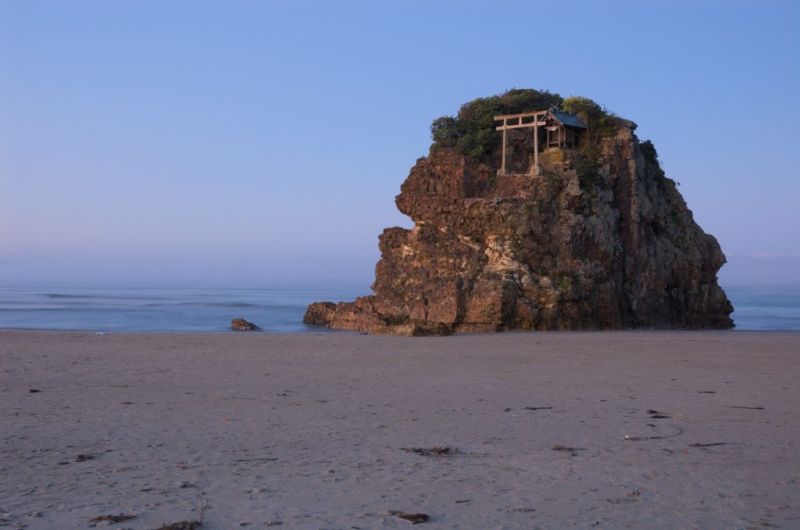
For more about the religious significance of Izumo Taisha, please see here or here or here. Please also see the Category for Izumo in the righthand column of this page.

